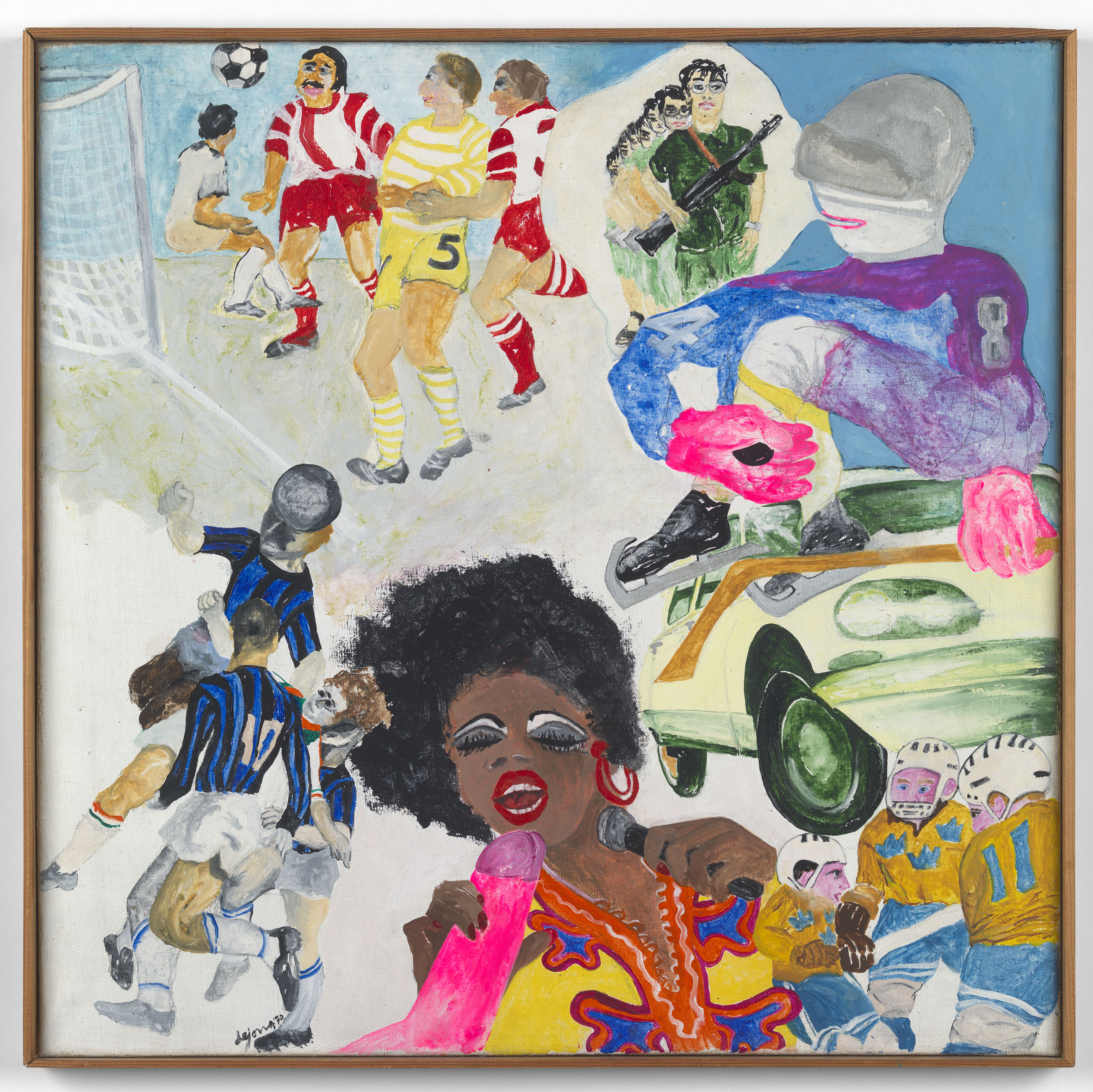Frieze, the annual art fair, is under way in Regent’s Park in London (October 3 to 6 ) for its latest edition. In the Spotlight section of Frieze Masters, which features work made before the year 2000, there are notable solo presentations highlighting the work of pioneering artists from around the world.
Three artists in this sector—all born within the same decade—especially caught our eye. Each one showed a feminist approach to their art long before modern media was lamenting the lack of female representation at the institutional level. Prescient and resonant today, the work is bold, colorful, confrontational about gender, and—perhaps best of all—wonderfully irreverent.

Jacqueline de Jong
Pippy Houldsworth Gallery, London
Dutch painter Jacqueline de Jong grew up in an art-loving household: the only privately-owned Willem de Kooning in the Netherlands hung under her childhood roof. At age 18 she moved to Paris and worked at the Christian Dior boutique on Avenue Montaigne (“It was absolute hell working there, but it was good for my French,” she said in an interview). She became one of two female members of the Situationist International, an anti-authoritarian leftist movement founded by Guy Debord. After they met in 1958, he appointed De Jong to head up the Dutch section of the movement, although he dismissed her from the role four years later. Thereafter, De Jong moved back to Paris and, between 1962 and 1967, from her 11th arrondissement apartment, she independently oversaw six issues of an experimental magazine, The Situationist Times. (The now-iconic archive was purchased by the Beinecke Rare Book and Manuscript Library at Yale University a few years ago.) Acting as editor and publisher, as well as establishing its typography and layout, she commissioned multidisciplinary contributions from theater designers, composers, and artists. After the publication ran out of money, she pro-actively made posters during the Paris student uprising of May 68, and her series of erotic paintings from the same era (1966-68) reflect the fluid sexuality and revolutionary politics of the time: a mix of sensuality, sadomasochism, social change and quotidian musings.
Earlier this year, her work was exhibited at Stedelijk Museum—where she’d worked part-time as an adolescent—and she was awarded the Prix AWARE in Paris, which specifically celebrates female artists. Today, she continues to paint in Amsterdam and also cultivates varieties of potatoes on her Bourbonnais farm in France.
This excerpt was part of a longer article, which can be found below.

